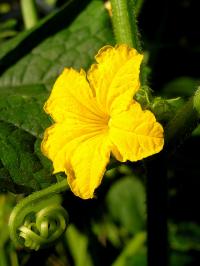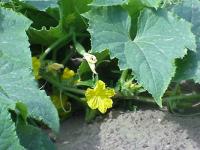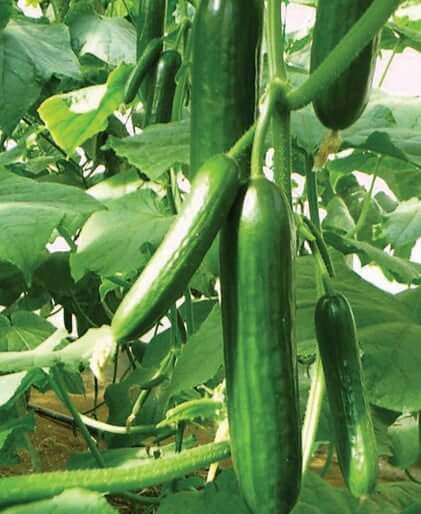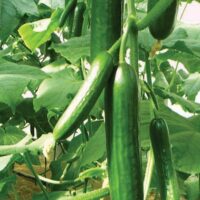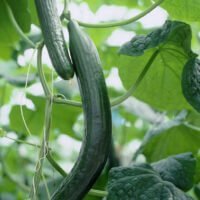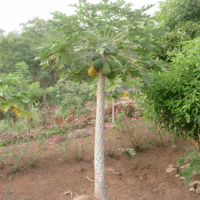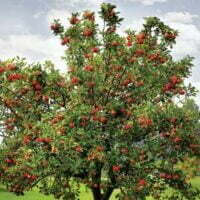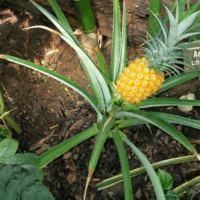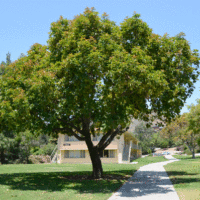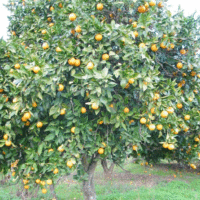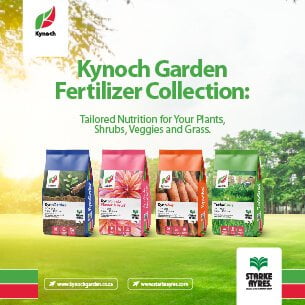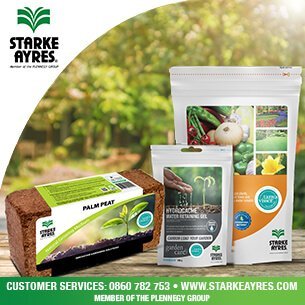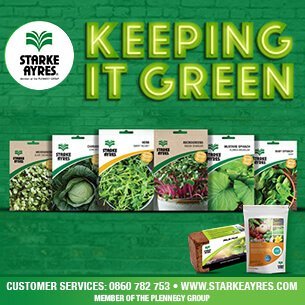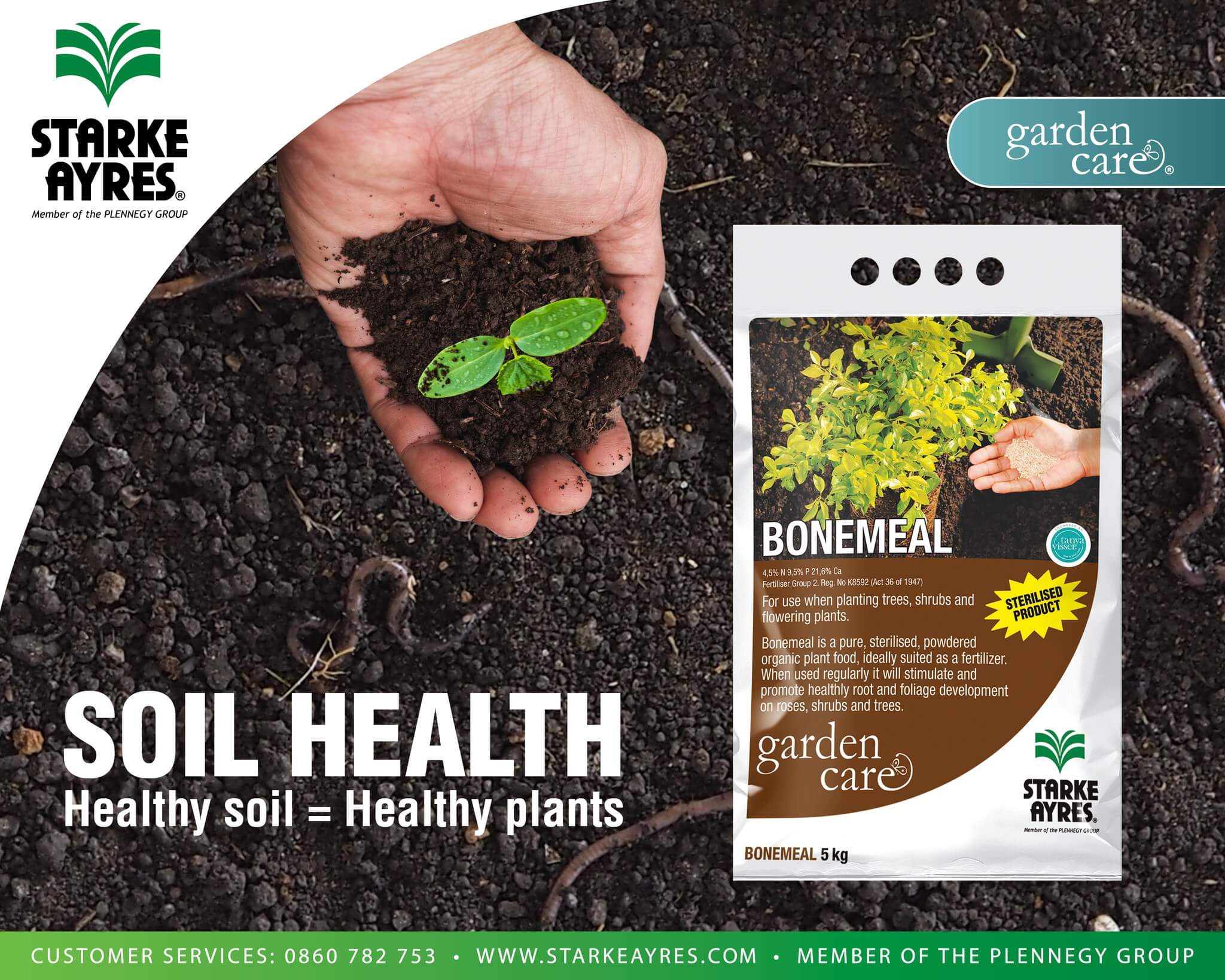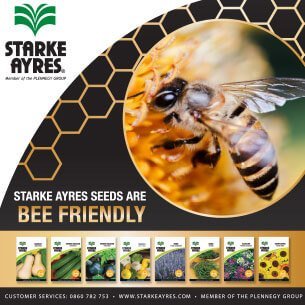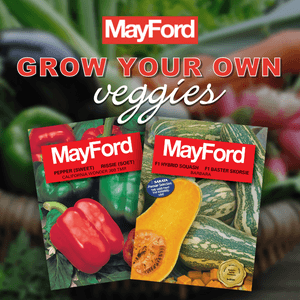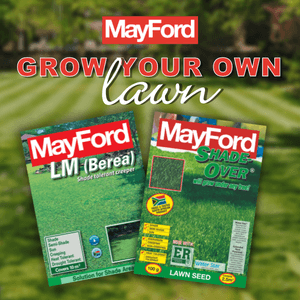| Botanical name | Cucumis sativus |
|---|---|
| Plant Care |  Deciduous Deciduous – Sheds Its Leaves Annually  Full Sun Full Sun – Prefers 6 or more hours of sun per day. Frost Hardy Frost Hardy – Can Handle frost without damage.  Moderate Watering Moderate Watering – Requires Regular Watering.  Pruning Required Pruning Required – Needs to be Pruned.  Non Indigenous Non Indigenous – Exotic to South Africa. |
| Categories | |
| Common name(s) | Cucumbers |
| Origin | |
| Planting instructions | Sow seed directly into the soil where they are to mature.Sow four to five seeds in each basin or planting station and cover with 15mm of soil.When seedlings are ±100mm tall, thin out to three to four plants per basin.They are creeping vines that generally need a trellis or supporting frame, but can also be grown in rows or basins 300mm across and ±1m apart.If grown on a trellis or fence, tie the young vines to the trellis until the tendrils have developed enough to cling on their own. |
| Maintenance | Keep basins free of weeds and water well during dry weather.Feed every two weeks with liquid fertilizer once flowers appear. |
| Soil conditions | Prepare the soil well by digging in plenty of compost and/or well rotted manure, plus a handful of general fertilizer per basin or running metre of row. |
| Uses | Cucumbers are used in salads and sandwich fillings. |
| Interesting planting ideas | Cucumber can be grown up fences, over pergolas, up sunflower stalks, and love to be near beans, lettuces, radishes and green peppers. Also, they release a root secretion which inhibits weeds. |
| Interesting info | Recommended variety: Sweet Crunch is very productive, with smooth-skinned fruit (12 – 15cm long) and a superior flavour. It is mildew-tolerant. |
| Common pests and diseases | Aphids, red spider mite and pumpkin fly. (To control pumpkin fly, use a bait solution of Malathion combined with 100g sugar per litre of water.) Powdery and downy mildew in moist weather conditions. |
| Harvest | Fruits should be ready for picking 8-10 weeks after sowing.Pick regularly, before the pips start to harden. |
| Yield | Six plants should yield enough for a family of four.Sow every six weeks in the season. |
Cucumis sativus (Cucumbers)
- Botanical name: Cucumis sativus
- Common name(s): Cucumbers
- Categories: Fruits and Vegetables
Plant description:
When grown naturally outdoors, cucumbers are warm-season vegetables that utilize crosspollination to produce fruits.
Family: Cucurbitaceae
Botanical Pronunciation: KOO-koo-mis sa-TEE-vus
Cucumis sativus requirements and features
info on these icons
Moderate Maintenance
Requires moderate maintenance.
Prohibited Use Notice: No Data Scraping Allowed Except for Search Engine Indexing:
The content provided on PlantInfo.co.za is intended for personal, non-commercial use only. Unauthorized extraction, reproduction, or use of the data, including scraping, for any purpose other than search engine indexing is strictly prohibited. Violations of these terms may result in legal action. By accessing and using this website, you agree to comply with these conditions and acknowledge the legal restrictions on the use of our content.
